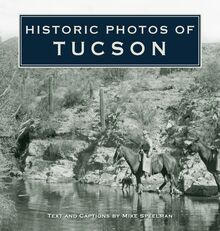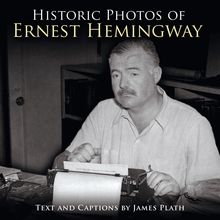Historic Photos of Raleigh-Durham , livre ebook
167
pages
English
Ebooks
2007
Vous pourrez modifier la taille du texte de cet ouvrage
Obtenez un accès à la bibliothèque pour le consulter en ligne En savoir plus
Découvre YouScribe en t'inscrivant gratuitement
Découvre YouScribe en t'inscrivant gratuitement
167
pages
English
Ebooks
2007
Vous pourrez modifier la taille du texte de cet ouvrage
Obtenez un accès à la bibliothèque pour le consulter en ligne En savoir plus
Publié par
Date de parution
01 mai 2007
Nombre de lectures
1
EAN13
9781618586728
Langue
English
Poids de l'ouvrage
35 Mo
From the home of the City of Oaks in Raleigh and the state's capitol, to the Bull City in Durham, Historic Photos of Raleigh-Durham is a photographic history collected from the area's top archives. With around 200 photographs, many of which have never been published, this beautiful coffee table book shows the historical growth from the mid 1800's to the late 1900's of this scenic area in stunning black and white photography.
The book follows life, government, events and people important to Raleigh-Durham history and the building of this unique city. Spanning over two centuries and two hundred photographs, this is a must have for any long-time resident or history lover of Raleigh-Durham!
Publié par
Date de parution
01 mai 2007
Nombre de lectures
1
EAN13
9781618586728
Langue
English
Poids de l'ouvrage
35 Mo
HISTORIC PHOTOS OF
RALEIGH-DURHAM
T EXT AND C APTIONS BY D USTY W ESCOTT AND K ENNETH P ETERS
Nashville, Tennessee Paducah, Kentucky
In this rooftop view of Trinity College, ca. 1904-6, one can see Craven Memorial Auditorium, the Library, Alspaugh Dormitory, and Crowell Science Building. Erwin Mills and Ninth Street are in the background.
HISTORIC PHOTOS OF
RALEIGH-DURHAM
Turner Publishing Company
200 4th Avenue North Suite 950
Nashville, Tennessee 37219
(615) 255-2665
412 Broadway P.O. Box 3101
Paducah, Kentucky 42002-3101
(270) 443-0121
www.turnerpublishing.com
Historic Photos of Raleigh-Durham
Copyright 2007 Turner Publishing Company
All rights reserved.
This book or any part thereof may not be reproduced or transmitted in any form or by any means, electronic or mechanical, including photocopying, recording, or by any information storage and retrieval system, without permission in writing from the publisher.
Library of Congress Control Number: 2007923665
ISBN-13: 978-1-59652-338-8
ISBN-10: 1-59652-338-7
Printed in the United States of America
07 08 09 10 11 12 13 14-0 9 8 7 6 5 4 3 2 1
C ONTENTS
A CKNOWLEDGMENTS
P REFACE
A T ALE OF T WO C ITIES (1860-1899)
T OBACCO T RUSTS AND T ROLLEY C ARS (1900-1919)
H APPY D AYS A RE H ERE AND G ONE (1920-1939)
L ET F REEDOM R ING A LONG T OBACCO R OAD (1940-1965)
N OTES ON THE P HOTOGRAPHS
Two Raleigh trolley cars pass each other in this undated photograph.
A CKNOWLEDGMENTS
This volume, Historic Photos of Raleigh-Durham , is the result of the cooperation and efforts of many individuals and organizations. It is with great thanks that we acknowledge in particular the valuable contribution of the Durham County Library s Durham Historic Photographic Archives, North Carolina State Archives, and the Library of Congress.
P REFACE
Raleigh-Durham has thousands of historic photographs that reside in archives, both locally and nationally. This book began with the observation that, while those photographs are of great interest to many, they are not easily accessible. During a time when Raleigh-Durham is looking ahead and evaluating its future course, many people are asking, How do we treat the past? These decisions affect every aspect of the city-architecture, public spaces, commerce, infrastructure-and these, in turn, affect the way that people live their lives. This book seeks to provide easy access to a valuable, objective look into the history of Raleigh-Durham.
The power of photographs is that they are less subjective than words in their treatment of history. Although the photographer can make decisions regarding subject matter and how to capture and present it, photographs do not provide the breadth of interpretation that text does. For this reason, they offer an original, untainted perspective that allows the viewer to interpret and observe.
This project represents countless hours of review and research. The researchers and writer have reviewed thousands of photographs in numerous archives. We greatly appreciate the generous assistance of those listed in the acknowledgments of this work, without whom this project could not have been completed.
The goal in publishing this work is to provide broader access to this set of extraordinary photographs which seek to inspire, provide perspective, and evoke insight that might assist people who are responsible for determining Raleigh-Durham s future. In addition, the book seeks to preserve the past with adequate respect and reverence.
With the exception of touching up imperfections caused by the damage of time and cropping where necessary, no other changes have been made. The focus and clarity of many images is limited to the technology and the ability of the photographer at the time they were taken.
The work is divided into eras. Beginning with some of the earliest known photographs of Raleigh-Durham, the first section records photographs from before the Civil War through the late nineteenth century. The second section spans the early years of the twentieth century through the World War I era. Section 3 moves to the twenties and thirties. The last section covers the World War II era up to recent times.
In each of these sections we have made an effort to capture various aspects of life through our selection of photographs. People, commerce, transportation, infrastructure, religious institutions, and educational institutions have been included to provide a broad perspective.
We encourage readers to reflect as they go walking in Raleigh-Durham, strolling through the city, its parks, and its neighborhoods. It is the publisher s hope that in utilizing this work, longtime residents will learn something new and that new residents will gain a perspective on where Raleigh-Durham has been, so that each can contribute to its future.
Todd Bottorff, Publisher
Shoe shiners work their trade on a Durham street, ca. 1940.
A T ALE OF T WO C ITIES
(1860-1899)
Thanks to media marketing, modern census figures, and a shared international airport, Raleigh-Durham exists in the minds of many Americans as a single city in the southeastern United States. However, as native Tar Heels are well aware, Raleigh and Durham are two distinct communities that lie about 25 miles apart within the rolling hills of Piedmont North Carolina. Each has a fascinating history that makes it unique and worthy of individual study.
Created as one of America s earliest planned cities, Raleigh was established in 1792 as the first permanent seat of government for the State of North Carolina. Carved out of an oak forest on 1,000 acres of land purchased from Wake County plantation owner Joel Lane, the new town struggled in its early years, hampered by poor transportation modes, a lack of economic enterprises beyond state government, and-in 1831-the loss of the original 1794 Statehouse in a disastrous fire.
Following the Civil War, the city slowly recovered economically as its main retail avenue-Fayetteville Street-became the commercial capital for Eastern North Carolina. The advent of a streetcar system in the 1880s, and the establishment of no fewer than six institutions of higher learning by 1899, made possible a comfortably affluent middle-class population in the absence of heavy industry and home-grown industrial magnates.
A bit more than half a century younger than Raleigh, Durham grew around a railroad station established in rural Orange County. In 1849, Dr. Bartlett Durham gave less than four acres to the North Carolina Railroad; Durham s station was built and named in his honor. The first post office opened in 1853, but the town was not incorporated until 1869. The new town, wanting a stronger voice, petitioned the state legislature in 1881 to create Durham County from portions of Orange and Wake counties.
The first tobacco factory opened in 1858. Growth was slow until after the Civil War when local industrialists opened their own factories and Durham s main industry began to draw worldwide attention. Textile manufacturing plants were opened to make the cloth bags for tobacco. It was also during this period that Washington Duke and Julian S. Carr donated money and land to Trinity College on the condition that it relocate from Randolph County to Durham. It did so in 1892.
Created as the state s capital city in 1792, Raleigh was laid out according to a plan drawn up by state senator William Christmas. The plan included four main thoroughfares radiating outward from the central statehouse. The southern avenue-Fayetteville Street-became Raleigh s commercial district. This early photograph of Fayetteville Street, thought to be from the 1860s, shows E. Besson s Tailor Shop.
The Raleigh and Gaston Railroad Office Building, ca. 1870s. Constructed in Raleigh during the early 1860s to house offices for the first railroad to serve the capital city, this building was embellished with a wrought-iron front porch in the 1870s. Later known as the Seaboard Coast Line Building, after that railroad absorbed the Raleigh and Gaston line, the structure was moved in 1977 from its original location to its present home at 413 North Salisbury Street.
This 1870 image shows merchants Day and Meadows standing in front of their Durham store.
This undated photograph depicts a parade marching along Raleigh s Fayetteville Street.
The institution now known as Duke University in Durham can trace its roots back to a Randolph County schoolhouse opened in the late 1830s. Rechartered as Normal College in 1851, the school changed its name to Trinity College in 1859 and continued to operate within Randolph County until the 1890s. These nine Trinity College marshals, wearing sashes and lapel pins, are dressed and ready for a college function, ca. 1871.
This view of the North Carolina State Capitol was recorded in 1861 and shows Governor David Reid in the foreground. A graceful granite structure that was completed between 1833 and 1840, this statehouse was built to replace an earlier 1794 building that burned to the ground in June 1831.
A unit of the Raleigh Light Infantry lines up along Morgan Street just south of the North Carolina State Capitol, ca. 1875.
A Raleigh landmark for more than 130 years, the Briggs Building opened in 1874 as a home for Thomas H. Briggs Sons, a building supply and hardware business. The Briggs family did business on the first floor, renting out the upper floors to other retailers. After the family-owned hardware business moved to a suburban location in 1995, the building was sold and renovated for use by non-profit organizations.
Opened in 1850 on Raleigh s Fayetteville Street, the Yarborough House quickly became known as the city s finest hotel. Over the years it would host the likes of William Jennings Bryan, Andrew Johnson, William Howard Taft, Woodrow Wilson, and-at the height of the Civil War-Mrs. Jefferson Davis, First Lady of the Confederacy. The hotel fell victim to a destructive fire in July














